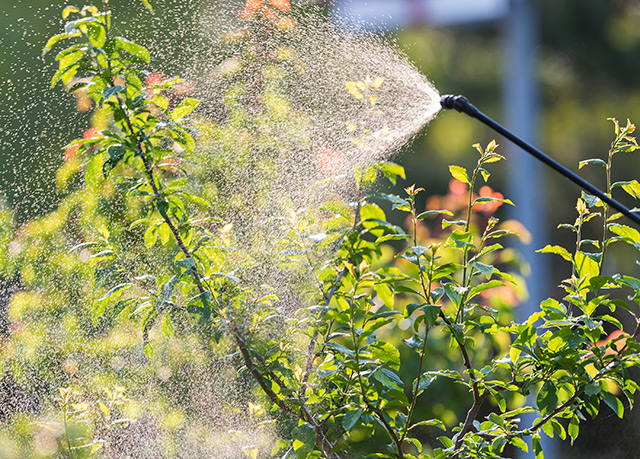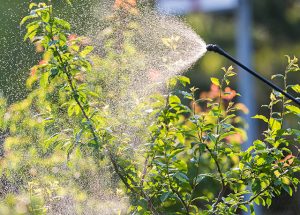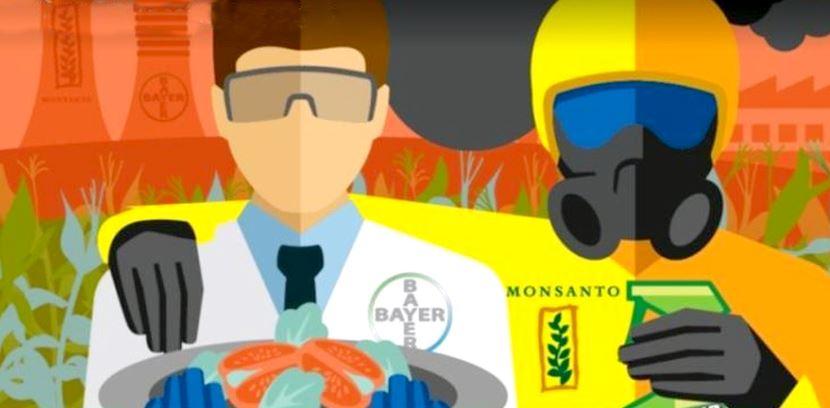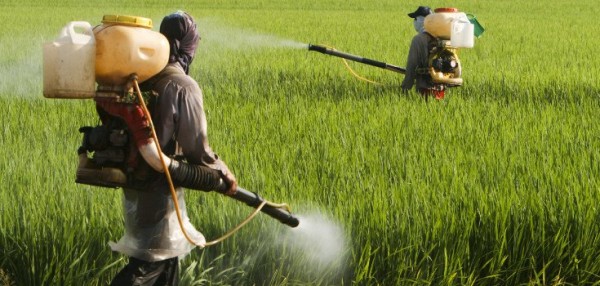Chlordane — toxicity, side effects, diseases and environmental impacts
12/07/2017 / By Michelle Simmons

Chlordane is a persistent organochlorine insecticide that was used to control termites in homes and against pests on agricultural crops, lawns, and gardens. It was also used as a fumigating agent. Chlordane is also known as chlordan and clordano and has the molecular formula of C10H6Cl8. It was first used in the United States in 1948, but all use of chlordane was canceled in April 1988 because of concerns about its potential cancer-causing effect, evidence of human exposure and build up in body fat, persistence in the environment, and danger to wildlife. It was available in different formulations, such as dusts, emulsifiable concentrates, granules, oil solutions, and wettable powders.
List of known side effects
There are several known side effects that chlordane can cause to humans. One of the major known side effects of chlordane is that it can possibly cause cancer, because studies have shown that it can cause liver cancer in animals. Chlordane exposure may also damage the developing fetus and fertility. In addition, it may cause personality changes of depression, anxiety, or irritability and may damage the liver and kidney. Other side effects of the chemical include irritation in the eyes and skin and burns and rash on contact. It can also cause irritation in the nose, mouth, and throat, nausea, vomiting, diarrhea, headache, abdominal pain, fatigue, confusion, dizziness, loss of muscle coordination, convulsions, unconsciousness, and death. Chlordane is harmful if swallowed, toxic in contact with skin, and can damage body organs with prolonged or repeated exposure.
For its environmental side effects, the chemical is breaks down slowly in the environment and is toxic to bees, moderately toxic to birds, and extremely toxic to fish.
Body systems affected by chlordane
The body systems that can be negatively affected by chlordane include the reproductive, ocular, nervous, digestive, respiratory, ocular, integumentary, and muscular systems.
Items that can contain chlordane
Some of the trade names of fungicide products that use chlordane as an active ingredient include Belt, Chlor Kil, Chlortox, Corodane, Gold Crest C-100, Kilex Lindane, Kypchlor, Niran, Octachlor, Octa-Klor, Synklor, Topiclor 20 , Toxichlor, and Velsicol 1068.
How to avoid chlordane
One way to avoid skin contact with chlordane is to wear protective protective clothing, such as gloves, suits, footwear, and headgear. In order to avoid eye contact with the insecticide, it is crucial to wear eye protection with side shields or goggles that is resistant to impact and splash. Since breathing in the chemical is also dangerous, the greatest protection is to enclose operations and provide local exhaust ventilation at the site of chemical release. Moreover, since it can be absorbed, refrain from eating, smoking, or drinking where the chemical is handled, processed, or stored and wash hands thoroughly before eating, drinking, smoking, or using the toilet.
Where to learn more
- Pesticides and phthalates top the P.O.P. contaminants list, polluting earth for decades to come
- Homebuilders inject pesticides into home foundations to kill termites
- 100 percent of children are found to be exposed to excessive arsenic, dioxins and pesticides in latest study
- STUDY: Exposure to certain pesticides makes you 6 times more likely to develop ALS
- 11 Common Cancer-causing Household Items To Remove From Your Home
Summary
Chlordane, an organochlorine insecticide, was used against termites in homes and pests on agricultural crops, lawns, and gardens. It was also used as a fumigating agent.
Chlordane is a possible human carcinogen.
Chlordane can damage the developing fetus, fertility, liver, and kidney, and may cause personality changes of depression, anxiety or irritability.
Chlordane can irritate the eyes, skin, respiratory tract.
Chlordane can cause nausea, vomiting, diarrhea, headache, abdominal pain, fatigue, confusion, dizziness, loss of muscle coordination, convulsions, unconsciousness, and death.
Chlordane can negatively affect the reproductive, ocular, nervous, digestive, respiratory, ocular, integumentary, and muscular systems.
Chlordane slowly breaks down in the environment and is toxic to bees, moderately toxic to birds, and extremely toxic to fish.
Sources include:
NJ.gov[PDF]
Tagged Under: Chlordane




















